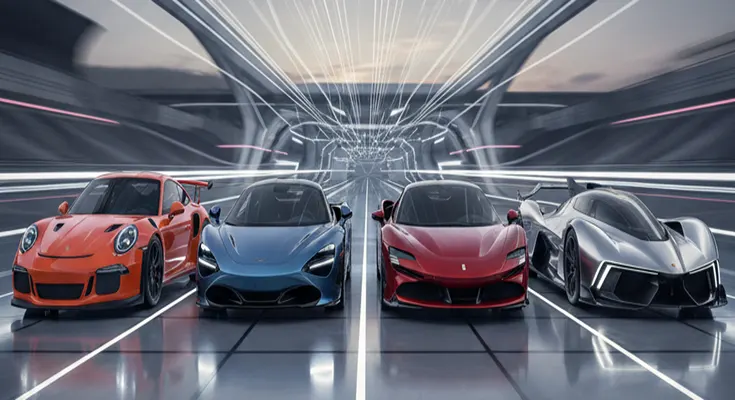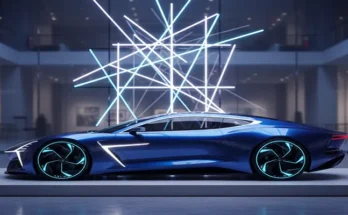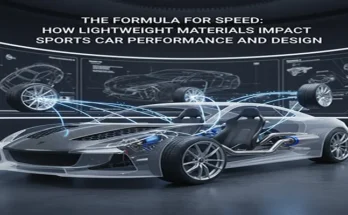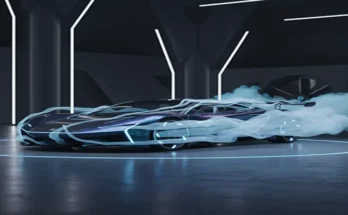The last decade (roughly 2015 to 2025) has been a pivotal era for sports car design, marked by a dynamic convergence of aerodynamic necessity, technological integration, and the industry’s accelerating shift toward electrification. While the fundamental low-slung, aggressive profile remains, the details—and the core engineering—have evolved dramatically, transforming these high-performance machines.
1. The Dominance of Active Aerodynamics
Perhaps the most significant design shift is the incorporation of active aerodynamic elements that visibly change the car’s shape based on speed and driving conditions. Once reserved for top-tier hypercars, active aero is now common across the performance spectrum.
- Integrated Form: Designers have moved past simple fixed wings, utilizing systems like deployable rear spoilers, active front splitters, and flaps to manage airflow, downforce, and drag in real-time. This not only boosts performance but allows for cleaner, more elegant baseline designs when the car is cruising.
- Functional Sculpting: Every body panel is now a study in airflow management. Features like large side intakes, intricate fender vents, and aggressive rear diffusers are not just stylistic; they are meticulously sculpted using Computer-Aided Design (CAD) and computational fluid dynamics (CFD) to cool batteries/engines and maximize stability at high speeds. The result is a look that is more angular, layered, and technical than previous decades.
2. Electrification and the New Proportions
The rise of hybrid and pure electric powertrains has begun to reshape fundamental sports car architecture, even in models that retain internal combustion engines (ICE).
- Mid-Engine Mainstream: For many traditional ICE sports cars, the move to a mid-engine layout (engine placed behind the driver but in front of the rear axle), exemplified by the latest generation of the Chevrolet Corvette, has become more prevalent. This is primarily for optimal weight distribution and handling, allowing for a lower hood line and cab-forward design.
- Battery Packaging Challenges: For Electric Sports Cars (ESC), the need to house large, flat battery packs creates design constraints. While this can lead to a slightly higher floor, designers are leveraging the absence of a large engine block to create vastly different front-end designs and maximize interior cabin space. This often results in a smoother, more ‘monolithic’ body shape since a traditional radiator grille is no longer strictly necessary.
- Hybrid Power Aesthetics: Performance hybrids often feature highly visible charging ports and unique badging, subtly advertising the dual-power source.
3. Lighting as a Design Signature
Modern sports cars have embraced advanced LED lighting technology to create distinct and recognizable visual signatures, both day and night.
- Signature Running Lights (DRLs): Headlights have become narrower, more aggressive, and often complex, integrating distinctive light patterns that serve as a brand’s visual identity.1
- Full-Width Light Bars: The trend of a single, continuous rear light bar spanning the width of the car has become nearly ubiquitous across premium and performance segments, giving a futuristic, low-and-wide appearance.
- Illuminated Elements: Some manufacturers have begun experimenting with illuminated logos or grille outlines, using light to highlight key design features and add a futuristic, high-tech flair.
4. The Digital Cockpit and Interior Fusion
The interiors of sports cars have transitioned from focused, analog cockpits to high-tech digital environments.
- Screen Dominance: Physical buttons have been largely replaced by large, high-resolution touchscreens and entirely digital driver displays, integrating navigation, performance metrics, and infotainment.
- Advanced Materials: Beyond traditional leather and carbon fiber, interiors are increasingly incorporating sustainable or technical materials, such as Alcantara, recycled plastics, and unique woven fabrics, reflecting a broader societal trend toward environmental awareness and material innovation.
- Driver Focus: Despite the tech integration, sports car interiors maintain a strong driver-centric layout, with controls angled towards the pilot and high-bolstered seats to emphasize the driving experience.
In summary, the sports car of the last decade is an exercise in hyper-functionality. Its design is less about simple aesthetics and more about visible performance and advanced technology, resulting in shapes that are sharper, smarter, and intimately connected to the digital and electric future of the automobile.





